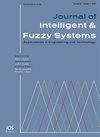Medical image segmentation using hybrid Contrast Limited Adaptive Histogram Equalization (CLAHE) and expectation maximization algorithm
IF 1
4区 计算机科学
Q3 COMPUTER SCIENCE, ARTIFICIAL INTELLIGENCE
引用次数: 0
Abstract
Early detection of diseases in men and women can improve treatment and reduce the risk involved in human life. Nowadays techniques which are non-invasive in nature are popularly used to detect the various types of diseases. Histopathological analysis plays a major role in finding the nature of the disease through medical images. Manual interpretation of these medical imaging takes time, is tedious, subjective, and can have human errors. It has also been discovered that the interpretation of these images varies amongst diagnostic labs. As computer power and memory capacity have increased, methodologies and medical image processing techniques have been developed to interpret and analyse these images as a substitute for human involvement. The challenge lies in devising an efficient pre-processing technique that helps in analysing, processing and preparing the medical image for further diagnostics. This research provides a hybrid technique that reduces noise in the NITFI medical image by using a 2D adaptive median filter at level 1. The edges of the filtered medical image are preserved using the modified CLAHE algorithm which preserves the local contrast of the image. Expectation Maximization (EM) algorithm extracts the ROI part of the image which helps in easy and accurate identification of the disease. All the three steps are run over the 3D image slices of a NIFTI image. The proposed method proves that it achieves close to ideal RMSE, PSNR and UQI values as well as achieves an average runtime of 37.193 seconds for EM per slice.基于混合对比度限制自适应直方图均衡化和期望最大化算法的医学图像分割
早期发现男性和女性的疾病可以改善治疗并减少涉及人类生命的风险。目前,非侵入性技术被广泛用于检测各种疾病。组织病理学分析在通过医学图像发现疾病的性质方面起着重要作用。人工解读这些医学影像需要时间、繁琐、主观,还可能存在人为错误。研究还发现,诊断实验室对这些图像的解释各不相同。随着计算机能力和内存容量的增加,医学图像处理技术和方法已经发展到解释和分析这些图像,以替代人类的参与。挑战在于设计一种有效的预处理技术,以帮助分析、处理和准备进一步诊断的医学图像。本研究提供了一种混合技术,通过在1级使用二维自适应中值滤波器来降低NITFI医学图像中的噪声。采用改进的CLAHE算法保留了滤波后的医学图像的边缘,保留了图像的局部对比度。期望最大化(EM)算法提取图像的ROI部分,有助于简单准确地识别疾病。所有这三个步骤都在NIFTI图像的3D图像切片上运行。结果表明,该方法得到了接近理想的RMSE、PSNR和UQI值,EM每片的平均运行时间为37.193秒。
本文章由计算机程序翻译,如有差异,请以英文原文为准。
求助全文
约1分钟内获得全文
求助全文
来源期刊

Journal of Intelligent & Fuzzy Systems
工程技术-计算机:人工智能
CiteScore
3.40
自引率
10.00%
发文量
965
审稿时长
5.1 months
期刊介绍:
The purpose of the Journal of Intelligent & Fuzzy Systems: Applications in Engineering and Technology is to foster advancements of knowledge and help disseminate results concerning recent applications and case studies in the areas of fuzzy logic, intelligent systems, and web-based applications among working professionals and professionals in education and research, covering a broad cross-section of technical disciplines.
 求助内容:
求助内容: 应助结果提醒方式:
应助结果提醒方式:


